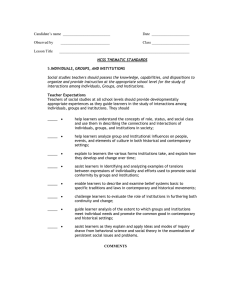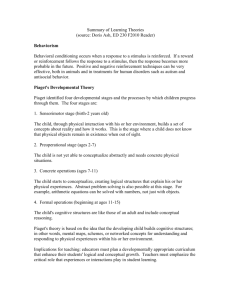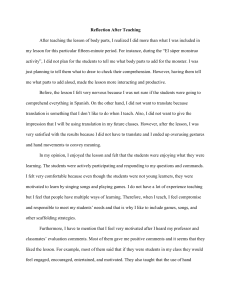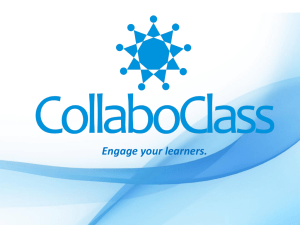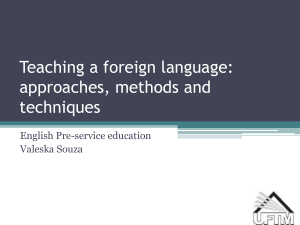File - AGSC Student Teaching Treasure Chest
advertisement
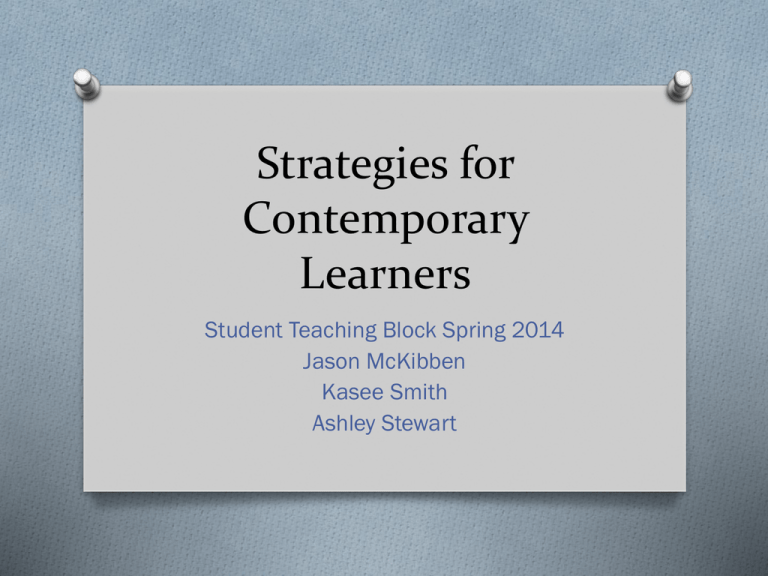
Strategies for Contemporary Learners Student Teaching Block Spring 2014 Jason McKibben Kasee Smith Ashley Stewart Grab a paper and write this down O Most student teachers believe that contemporary learners need either more structure, more measurement, or more engagement in order for teaching to be effective. How about this instead? O http://www.polleverywhere.com/free_text_p olls/R9s6fD4tKaPbJMa Bottom line: O When dealing with contemporary learners, they need all three, and: HOW YOU APPROACH THEM MATTERS!!! By the end of this workshop, you should be able to: O Understand the unique qualities of secondary students today O Examine tips to make every lesson successful O Explore some resources to make your life easier in the next 10 weeks Some facts about today’s students O Digital Learners How to succeed with every lesson (a review) 1. 2. 3. 4. 5. 6. 7. 8. 9. Get their attention Tell them the objectives Tie it to prior learning Give them the information See if they are “getting it” Make them do something with it Tell them how they are doing Test their knowledge Make sure they retain it Adapted from Gange’s (1965) Nine Events of Instruction 1. ATTENTION!! O Attention – Prerequisite for learning!! Easy to get, hard to sustain! O Relevance – Why do I need to know this? How will this affect my everyday life? O Confidence – Influences achievement! Confidence boosters will encourage persistence! O Satisfaction – Appropriate reinforcement of success builds confidence! 2. Tell them the objectives O Studies have shown that telling them the objectives increases student learning by up to 300% O Why? O Human brains are preprogrammed to focus and dedicate attention where it is directed 2. Tell them the objectives O Methods for presenting objectives: O TV Channel O “To Do” Boards O “Weekly Logs” O ALWAYS Post at the beginning????? O Discoverative learning doesn’t always need up front objectives O Don’t spoil the surprise O Share them when they become apparent 3. Tie it to prior learning (Scaffolding) O Allows students to take risks O Students comfortable making mistakes. O The goal is not always the correct answer but changing the way they think and understand. O Connects to information that the student already knows or understands. 3. Tie it to prior learning (Scaffolding) O Modeling O Bridging O Contextualizing O Schema Building O Metacognitive Development O (thinking about thinking) O Text Re-presentation 4. Give them the information CHUNKING! O Breaking down information into bite-sized pieces so the brain can easily digest new information. WHY?? O Our working memory (where we manipulate information) holds a limited amount of information at one time. 4. Give them the information CHUNKING! O Rule of Three O Using Graphic Organizers 4. Give them the information (presentation strategies) O Note taking alternatives O Know Books: make your own note packet O Colored notes O Notecard of success O Ten questions O Top ten O Write me a letter O Advanced Go Get It O Clock Notes 4. Give them the information (presentation strategies) O Group projects- ALWAYS HAVE A RUBRIC O Pitch Me! O PSAs 5. See if they are “getting it” 6. PERFORM! After modeling expectations, give students the opportunity to prove mastery of the concept. Good practice items SHOULD: O Encourage cooperation among students O Support active learning O Communicate high expectations O Provide for diverse learners 7. Tell them how they are doing O Give specific feedback on the effort they’ve made and what they’ve accomplished. For example, “You were well prepared; it paid off.” O When possible, describe both the work and the process—and their relationship, O Choose words that communicate respect for the student and the work. 7. Tell them how they are doing O Positively phrased feedback is more successful than negative feedback, even with negative feedback O Examples 8. Test their knowledge 9. Make sure they RETAIN it! How do we encourage the retention of knowledge BEYOND Test Day? 1. Provide meaningful context 2. Ensure continuous review through formative assessment 3. Transfer previously learned concepts to new tasks for reinforcement Our Present to You! O tamustudentteaching.weebly.com
